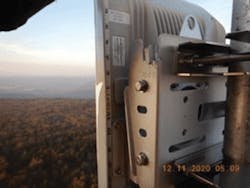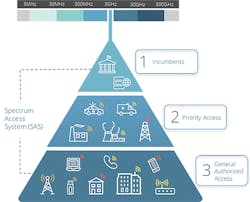Making the Case for Fixed Wireless Access
Information Communication Technology professionals from both wireless and wireline companies
continue to see their businesses blend and broadband deployment lines blur. The challenge to extend or improve broadband services in the age of a global pandemic is increasingly important.
For broadband delivery to IoT or homes and enterprise: copper, fiber, or fixed wireless access (FWA), are the usual options. But, in many service areas, network providers must deal with the reality that fiber or copper are not available. Therefore, they must find ways to deploy fast, reliable broadband service using innovative deployment solutions.
InvisiLight® Solution for Deploying Fiber
April 2, 2022Go to Market Faster. Speed up Network Deployment
April 2, 2022Episode 10: Fiber Optic Closure Specs Explained…
April 1, 2022Food for Thought from Our 2022 ICT Visionaries
April 1, 2022Clearly, fiber is the best long-term option to meet their customers’ needs. But providers face some significant challenges as they attempt to deploy it:
Trenching. Extensive regulations necessitate permits and expensive installations that make fiber trenching a difficult deployment option. However, fiber remains the medium of choice when permissible and feasible.
Population density. Remote or rural areas do not allow for the best business case for fiber deployment.
Terrain. Man-made or natural obstructions present insurmountable hurdles to operators looking to lay fiber. This includes river crossings, rocky terrain, rolling hills, or forested areas, and even suburban to urban concrete communities.
Spectrum. Wireless deployments typically require an operator to have access to various spectrum resources. These may be scarce, costly, and time-consuming to obtain. Luckily, FWA products generally operate on unlicensed or a lightly licensed spectrum, making deployments feasible.
When fiber is not feasible per the conditions above or the time available, FWA Hybrid solutions may be a strong alternative.
[toggle title=”CBRS in Action” load=”hide”]In January 2020, the FCC allowed commercial use of the first shared spectrum offering in the 3.55 to 3.70 GHz band (3.5 GHz band) called Citizens Broadband Radio Service (CBRS). Operators offering mobility, FWA, or Private LTE offerings, are expected to occupy the spectrum. A 3-tiered access and authorization framework accommodates shared federal and non-federal use of the spectrum.
Access and operations are managed by an automated frequency coordinator, known as a Spectrum Access System (SAS). When managing spectrum access, SASs may incorporate information from an Environmental Sensing Capability (ESC), a sensor network that detects transmissions from Department of Defense radar systems and transmits that information to the SAS.
SASs will coordinate operations between and among users in 3 tiers of authorization in the 3.5 GHz band.
Tier 1 — Incumbent Access: Includes authorized federal, Fixed Satellite Service (Space-to-Earth) Earth stations and, for a finite period, grandfathered wireless broadband licensees in the 3650 to 3700 MHz band. Incumbent Access users receive protection against harmful interference from Tier 2 and Tier 3 (see below).
Tier 2 — Priority Access: Priority Access Licenses (PALs) were licensed on a county-by-county basis in the July 2020 auction. Each PAL consists of a 10MHz channel within the 3550 to 3650 MHz band. PALs are 10-year renewable licenses. Seven (7) PALs may be licensed in any given county, subject to a 4-PAL channel aggregation cap for any licensee, and must meet a substantial performance requirement by the end of the initial license term. PALs must protect and accept interference from Tier 1 users but receive protection from Tier 3 users (see below).
Tier 3 — General Authorized Access (GAA): Shared spectrum to permit open, flexible access to the band for the widest possible group of potential users. GAA users can operate throughout the 3550 to 3700 MHz band. GAA users must not cause harmful interference to either Tier 1 users or Tier 2 users, and must accept interference from these users. GAA users also have no expectation of
interference protection from other GAA users. A total of eight 10MHz channels are designated for GAA.[/toggle]
3 Basic Deployment Considerations
With FWA solutions in mind, let’s spend some time understanding 3 basic deployment considerations for it.
1. Line of Sight (LOS) Conditions
LOS considers the ability to literally see or have no obstruction between 2 radios nodes in the network. Equipment operating on different spectrum and/or technology each have unique LOS requirements, so it is important to understand each condition.
• Clear Line of Sight (LOS). An unobstructed view between 2 wireless radios, typically a requirement for equipment operating at a certain spectrum such as 60GHz (V Band) or 80GHz (E Band).
• Near-Line of Sight (nLOS). A condition between 2 radios where a portion of the radio path may be partially obstructed, such as a tree canopy. This is best addressed using LTE technology with Multiple-input Multiple-output (MIMO) equipment. It multiplies the capacity of a radio link using multiple transmission and receiving antennas to exploit multipath propagation. Equipment that operates in the FWA unlicensed mid-band spectrum (such as 3.5GHz) is best suited for this.
• Non-Line of Sight (NLOS). A condition where the equipment may either penetrate an obstruction such as a building (low to mid-band wireless, or 2.6GHz or lower) or where LTE MIMO accepts reflection or multipath signals. Typically, LTE MIMO equipment that operates in the lower or mid-band spectrum has the capability for this.
2. Deployment Topologies
Different deployment topologies meet customer broadband needs across a wide spectrum of requirements including Point-to-Point, Point-to-Multipoint, and Mesh (Multipoint-to-Multipoint).
• Point-to-Point. A typical service offering from 1 Gigabit up to a true fiber extension speed of 10 Gigabit throughput capacity. Typical deployments include a LOS service where each antenna is mounted on a stable resource, such as a pole, rooftop, or tower. Most Point-to-Point services need to be professionally handled with an installer on each end ensuring absolute "pencil beam" connectivity.
There is one unique option that provides up to 850Mbps in each direction where multipath allows Near- or Non-Line of Sight conditions on any mount including strand.
• Point-to-Multipoint. A deployment model where the base radio is mounted on a tower or building and radiates out to multiple residences or enterprise. Typical service offerings include the CAFII unserved/underserved licensees offering speeds of 10Mbps downlink and 1Mbps uplink (10/1) and 25/3. The recent RDOF auction sought greater speed options including 50/5 (baseline), 100/20 (above baseline). These are all addressable with FWA products. These products operate best in LOS and nLOS conditions. (See Figure 1.)
Figure 1. Point-to-Multipoint Backhaul using CBRS for rural broadband.
• Mesh (Multipoint-to-Multipoint). V Band (60GHz) Mesh products offer a true fiber extension and Gigabit service. This condition meets the RDOF Gigabit tier offering 1 Gigabit downlink and 500Mb uplink. This deployment requires an absolute LOS condition, with Mesh Nodes mounted on lamp posts, monopoles, or rooftops, at 300m average distances.
Figure 2. Mesh (Multipoint-to-Multipoint) 60GHz backhaul and access for dense urban areas.
The solution can deliver Gigabit service at Mesh Node locations and to residences and enterprise through a non-meshing Remote Node (RN) or Customer Premise Equipment (CPE). This Mesh solution benefits from self-organization, interference aware, and self-healing capabilities. The main or initial fiber node may be fed directly with 10 Gigabit fiber or accept a 10 Gigabit Point-to-Point FWA link. (See Figure 2.)
3. Spectrum
FWA spectrum may be different in each country around the world, however there are a few consistencies that allow for equipment commonality globally.
Additionally, the spectrum channel bandwidths largely depict the speed capabilities available.
Unlicensed sub 6GHz bands are optimal for Point-to-Multipoint solutions delivering acceptable capacity of 3 to 5 miles from the radio pole mount. Unlicensed 5.1GHz to 5.8GHz is used for Point-to-Point and Point-to-Multipoint products, and are essentially interference free from rain, snow, and fog.
Numerous FCC Licensed bands are available including 6GHz, 11GHz, 18GHz, and 23GHz, offering Point-to-Point Gigabit FWA solutions to operators that cannot accept channel interference due to their customer service level agreements. Companies selling the solution can assist with the filing of the FCC license for the link to be deployed. It will guarantee that no competing infrastructure will interfere with their service offering.
Millimeter Wave (mmWave) products using E-Band and V-Band include technologies for high-speed (10Gbps) high-capacity wireless links, ideal for fiber extension in suburban and urban areas. Using high-frequency microwave in the E-Band (70-80GHz) and Mesh in the V-Band (60GHz) spectrum, links can be densely deployed in congested areas without interference, and without the need for digging to deploy fiber.
By contrast, mmWave links can be deployed in hours, and often moved and reused on different sites as network requirements evolve. Millimeter wave spectrum is the band of spectrum between 30 GHz and 300 GHz. Limitations include limited propagation distances due to the mmWave spectrum characteristics. (See Figure 3.)
Figure 3. CBRS: Tiered Spectrum Access
Access Is the Only Option
As detailed above, delivering broadband over fixed wireless requires knowledge of all the variables, as well as field experience in delivering tailored solutions. FWA is the ideal fiber extension solution for rural or dense urban environments, and meets the challenge in most scenarios whether a true 10Gb fiber extension, or the ability to provide an immediate broadband service necessitated by the pandemic, we have the partners, products, and service ability, to help.
For more information, email [email protected] or visit https://www.adtran.com/index.php/mesh-fixed-wireless.
At ADTRAN, we have the unique ability to offer our customers an end-to-end solution that includes everything from Residential Gateways and Enterprise solutions, through our Broadband product portfolio (Copper and Fiber), FWA portfolio, and extensive Professional Services and Maintenance solutions.
Follow ADTRAN on Twitter @ADTRAN.
Like this Article?
Subscribe to ISE magazine and start receiving your FREE monthly copy today!
About the Author








